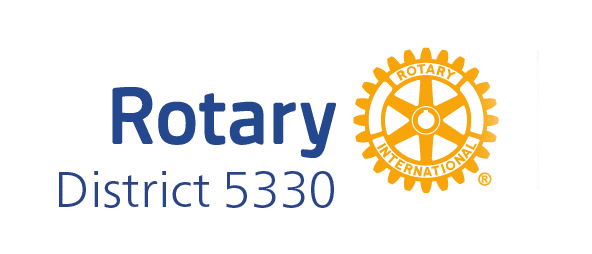Pollinators: The Little Things That Move the World
Jack Fitzsimmons
Rotary Club of Palm Desert
“Do you like to eat?”
Ask that question of a classroom full of third graders and you can imagine the response! I ask a second question: “Do you like to eat apples, or pumpkin pie, or watermelon?” Enthusiastic hands shoot up in the air. And then a final question, “Who helped make that apple that you eat?” Shouted responses include “Mommy! Abuela! Albertson’s!” You can hear a pin drop when I say, “That apple actually starts with a bee!” Thus begins the students first introduction to pollination.
So, what on earth does pollination have to do with Rotary? Quite a lot, it turns out.
On June 25, 2020, Rotary President Mark Maloney announced Protecting the Environment as our Seventh Area of Focus. Of course, Rotarians have been involved for decades with projects involving the environment. It many cases, the health of the environment is inseparable from issues of maternal health, water and hygiene, community building, and increasingly, peacebuilding. According to a World Bank estimates, by 2050 as many as 216 million people could be internally displaced by climate change. Tragically, the impact of a changing climate, compounded by habitat loss, pesticide misuse, and plant disease, is hitting our pollinators. Hard. Decline in pollinators varies according to species, but losses have exceeded 40% in the last decade – with no end in sight.
Consider the apple again. Most people are not aware that one out of every three bites of food we eat depend on pollinators. Some crops, like almonds, are entirely dependent on pollinators. In fact, 85% of the plants on Mother Earth depend on pollinators. With our food security facing an existential crisis of such magnitude, what can we do? Plenty!
People of Action Step Up
The first Operation Pollination (OP) project was launched in August 2015 in the St. Croix Valley of Minnesota and Wisconsin. A group of concerned citizens organized to collectively address the issue of pollinator loss and began restoring and creating pollinator habitats in their backyards, city parks, and schoolyards.
The organization blossomed and on September 24, 2022, the Environmental Sustainability Rotary Action Group (ESRAG), a division of Rotary International, and its Pollinator Task Group organized the signing of a multitude of pollinator partnership resolutions between Rotary districts and National Heritage Areas and other partners throughout the US, Canada and Mexico. This historic signing was done in coordination with the whistle-stop campaign of Rotary International’s first female president, Jennifer Jones.
Today, OP has 253 signed Pollinator Resolutions with Rotary Districts, individual clubs, water agencies, municipalities, and non-profit organizations. There are currently 175 OP “ambassadors” on six continents who have been trained to act as a catalyst for engagement and education. I have the great fortune to be one of the most recent ambassadors.
On December 27, 2024, District 5330 Governor Judy Zulfiqar signed the Pollinator Resolution. The Resolution is simple: it acknowledges the critical importance of pollinators and the crisis that we are facing, and that the leadership and impact of Rotarians volunteering to improve communities is a hallmark of Rotary International.
It is important to note that ESRAG’s Operation Pollination is a truly inclusive framework that helps recruit a diverse array of organizational partners willing to engage in the framework’s two goals: pollinator habitat restoration and education projects. Anyone can join; you do not have to be a Rotarian.
Personal Action
You can help pollinators at a personal level by a few simple steps:
- Plant a pollinator garden in your window box, patio, or backyard. Use native plants as much as possible because some pollinators won’t visit the “foreign” exotics that you find in nursery centers and big box stores, leading to a further loss of pollen and nectar food for local species.
- Provide nesting materials such as a small pile of brush or a hollow bamboo or yucca stem. Provide a shallow dish of water and most importantly, leave some of the soil of your yard or potted plants bare. Many of the local pollinator species nest in the ground.
- Eliminate the use of pesticides wherever possible since they poison both harmful and beneficial insects – and us!
- Learn about and get involved with the many like-minded organizations in your area – garden clubs, butterfly networks, native plant societies, and botanical and demonstration gardens.
- Buy organic produce from small local farms who use sustainable pollinator practices.
Club Action
On their websites, ESRAG and Operation Pollination offer a comprehensive Project Planning Toolkit and numerous examples of pollinator projects. These can range from establishing a pollinator demonstration at a local grade school, church or assisted living facility and sponsoring native plant sales and seed swaps, to advocating for open space and responsible land management at local government agencies. At a larger scale, there have been District and multi-district efforts to create pollinator garden “pathways” across state and country borders to support Monarch butterfly migration. And in Europe, there is a four-country project that gave away flowering plants to improve declining honey production. The project even collected and sold honey to enable the project’s sustainability. Large or small, there is nothing that People of Action cannot accomplish.
Want to know more?
Watch this short video produced by Operation Pollination and this interview with Past President Jennifer Jones. You can always contact me at [email protected] if for further information about Operation Pollination.


